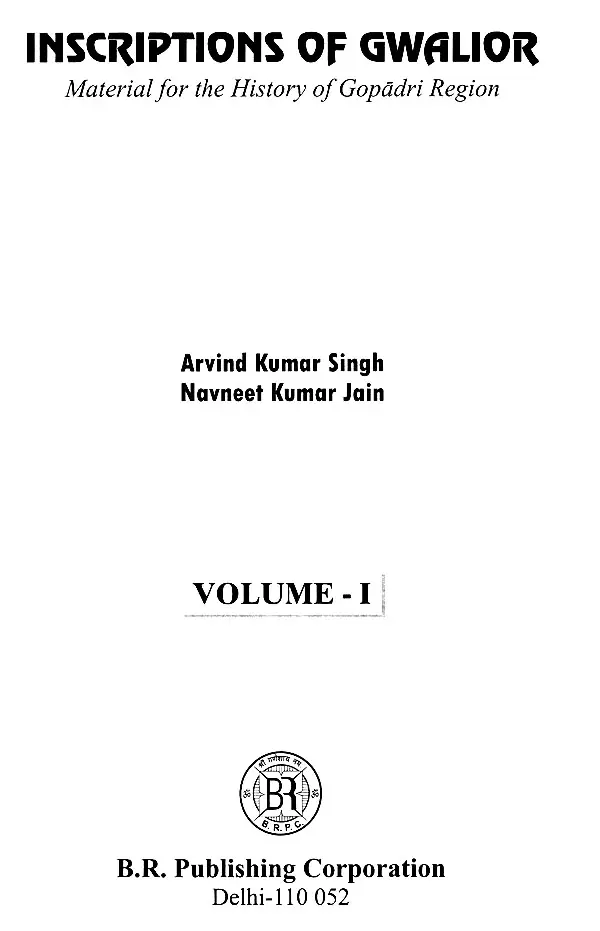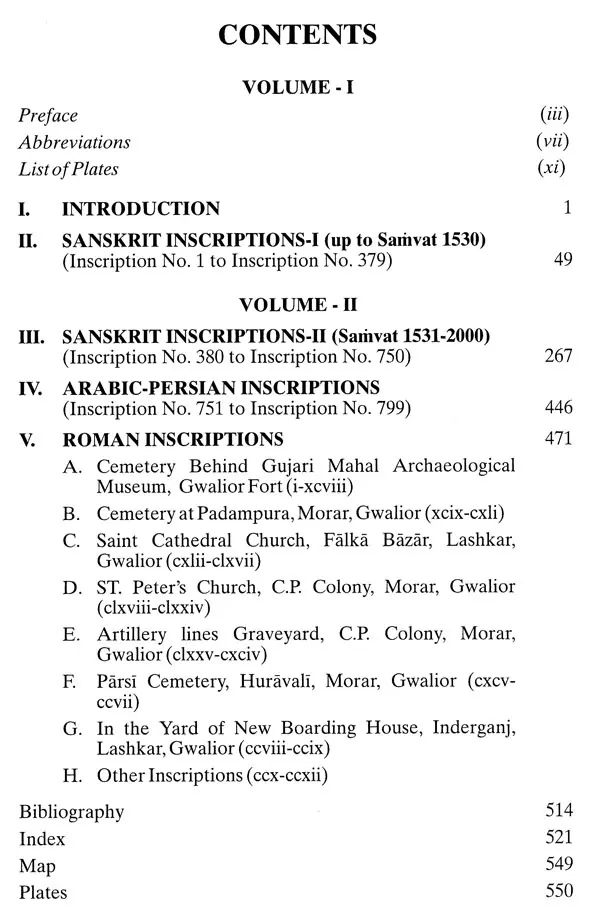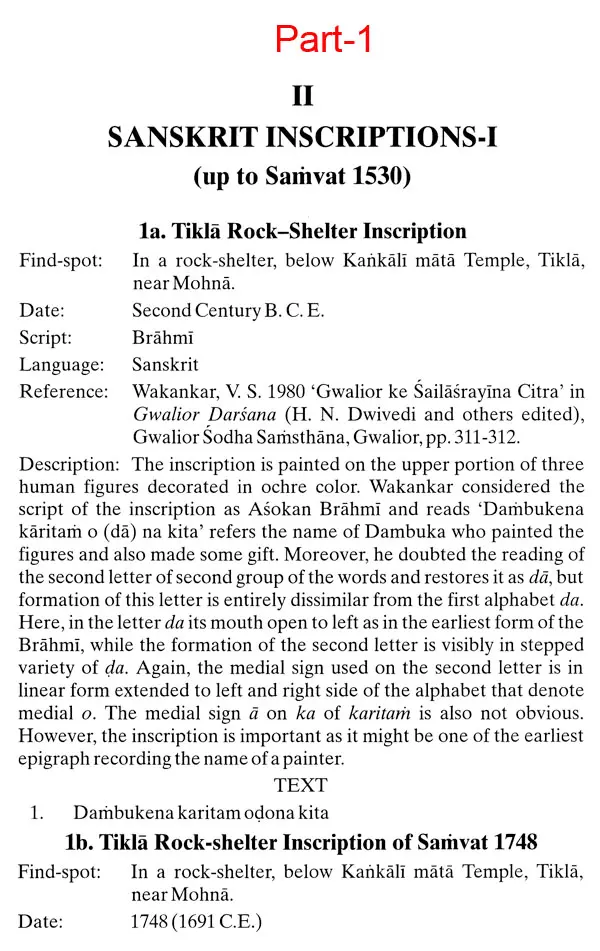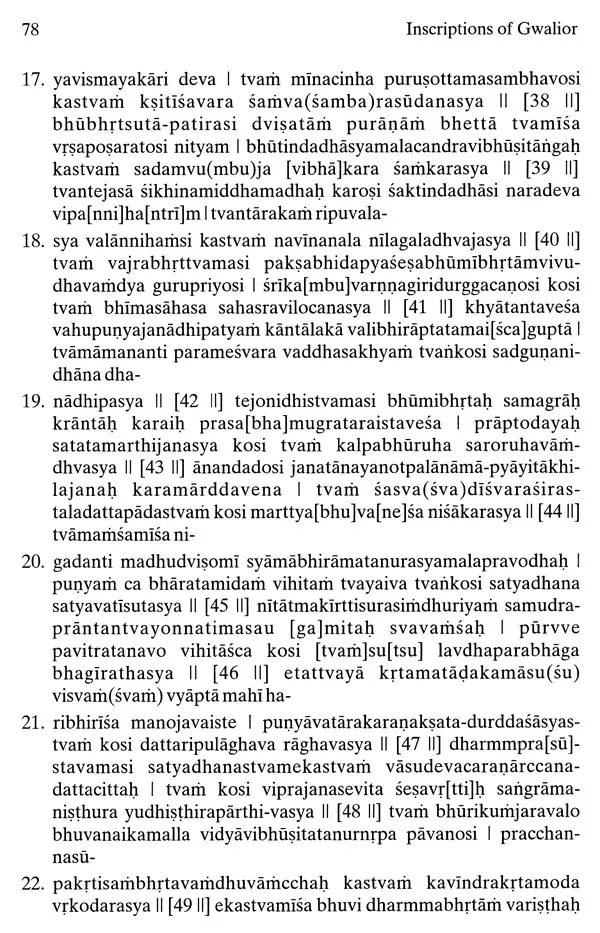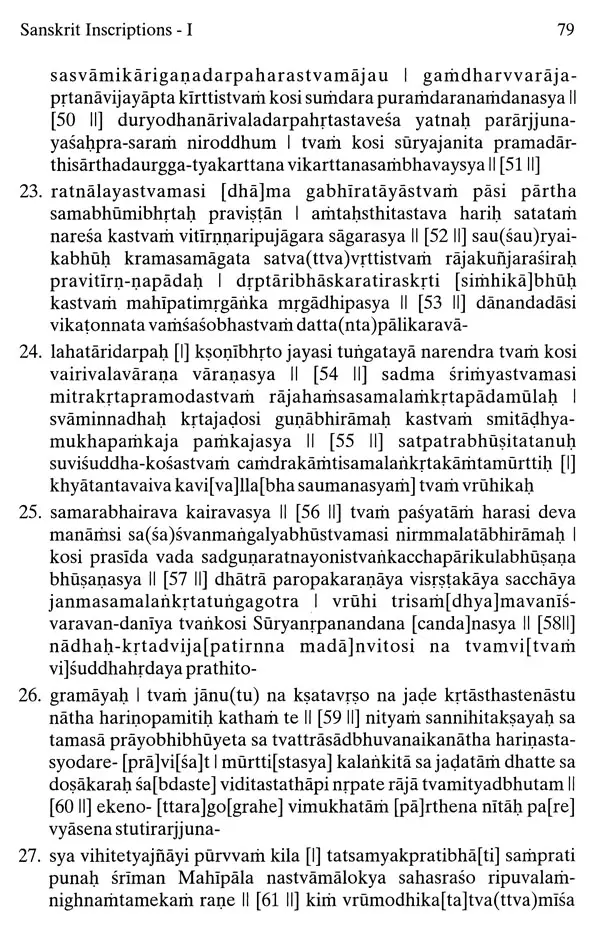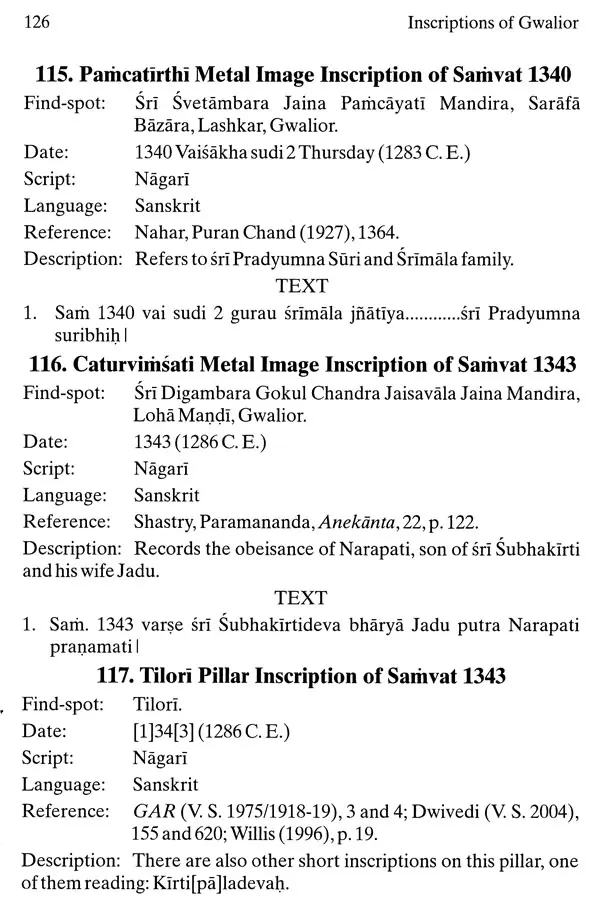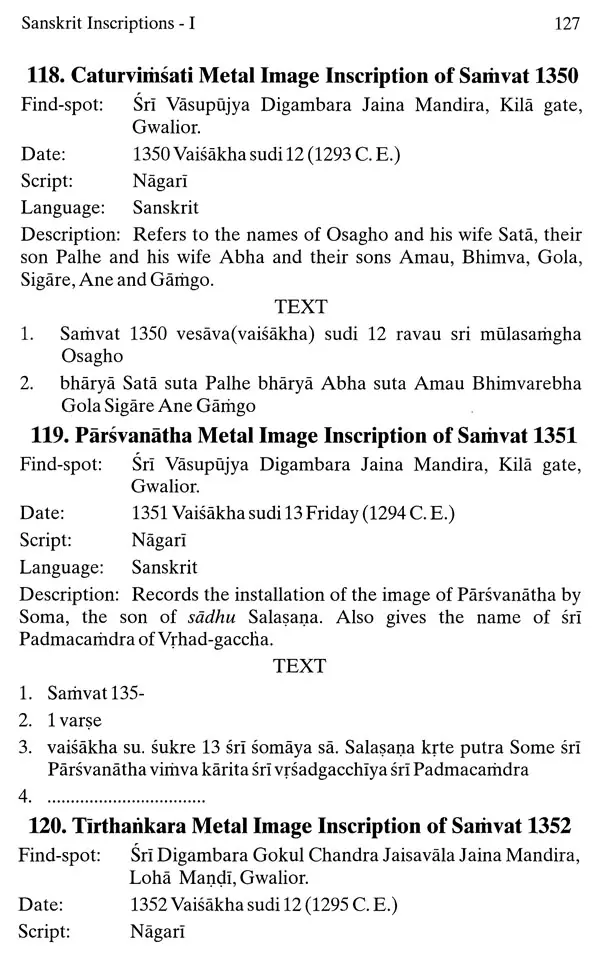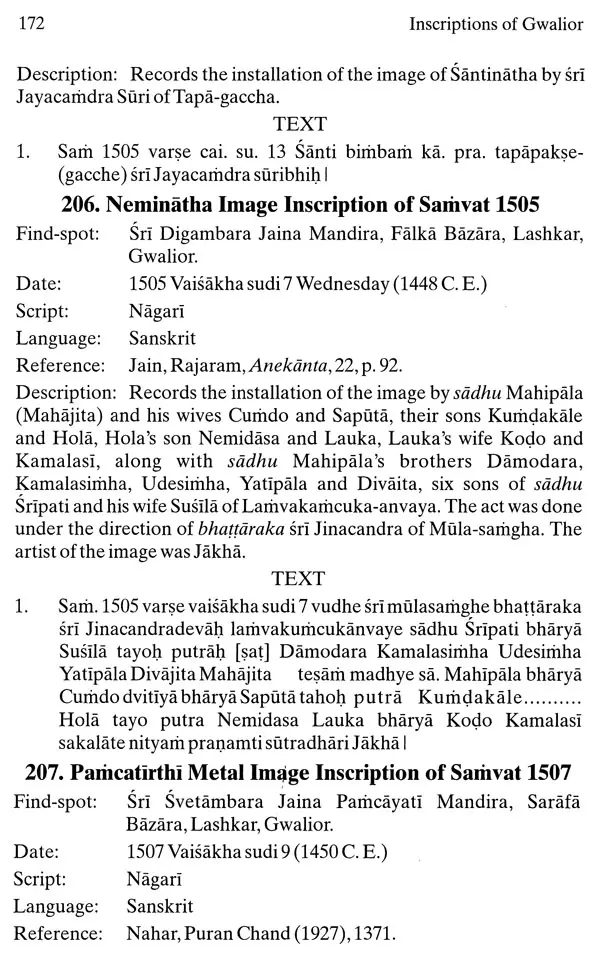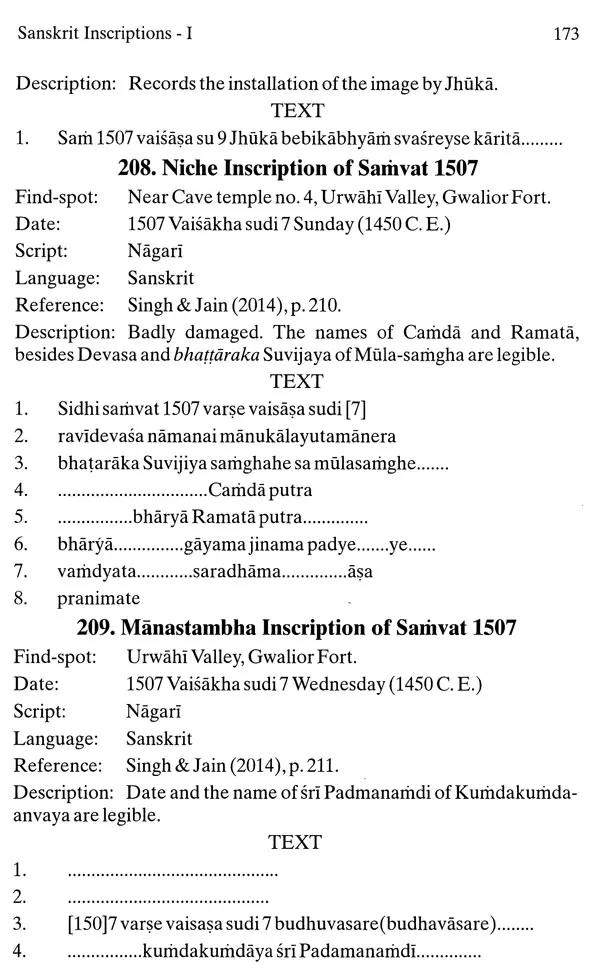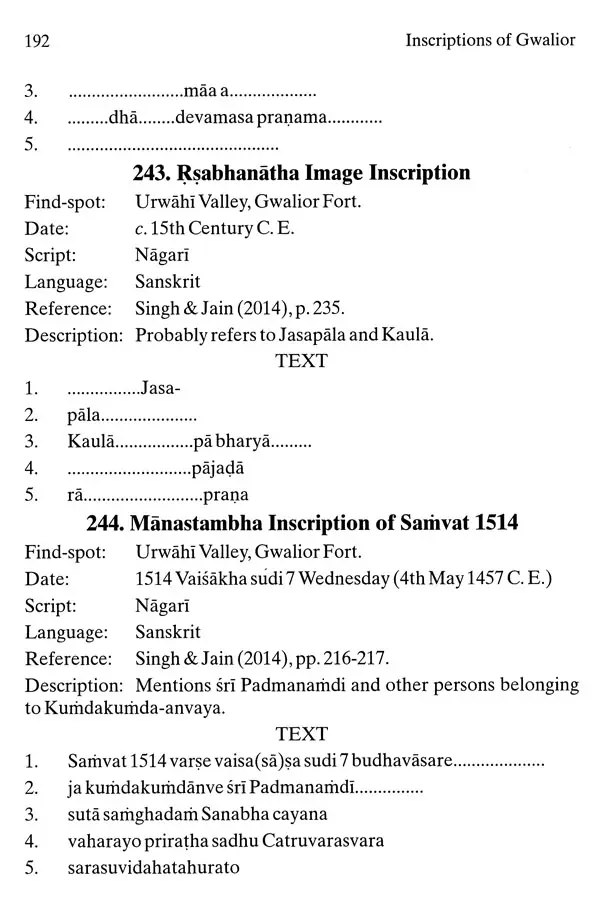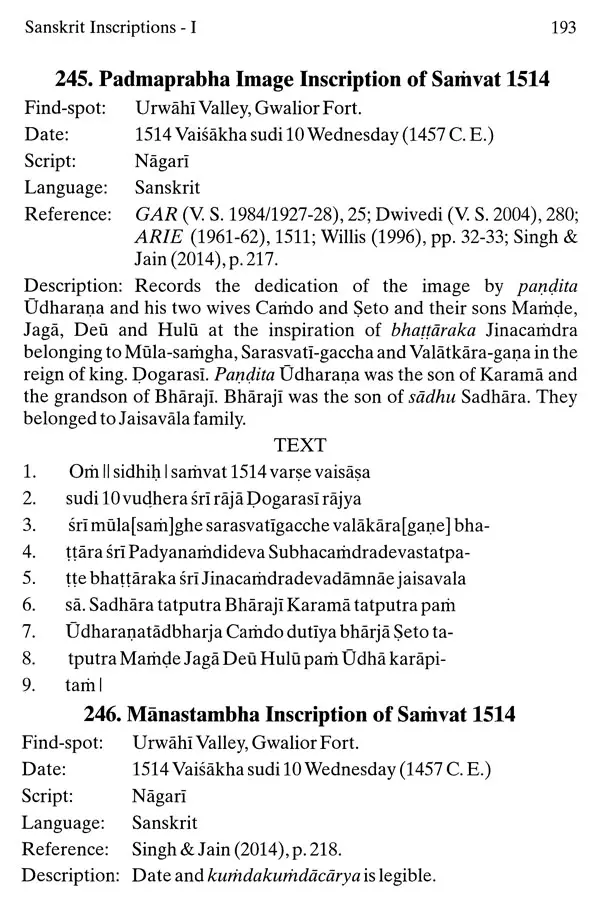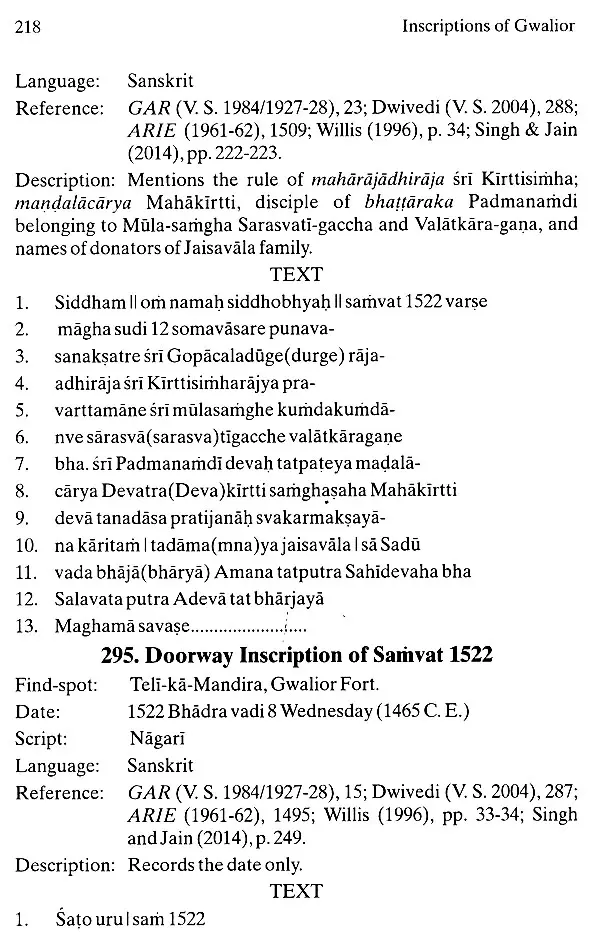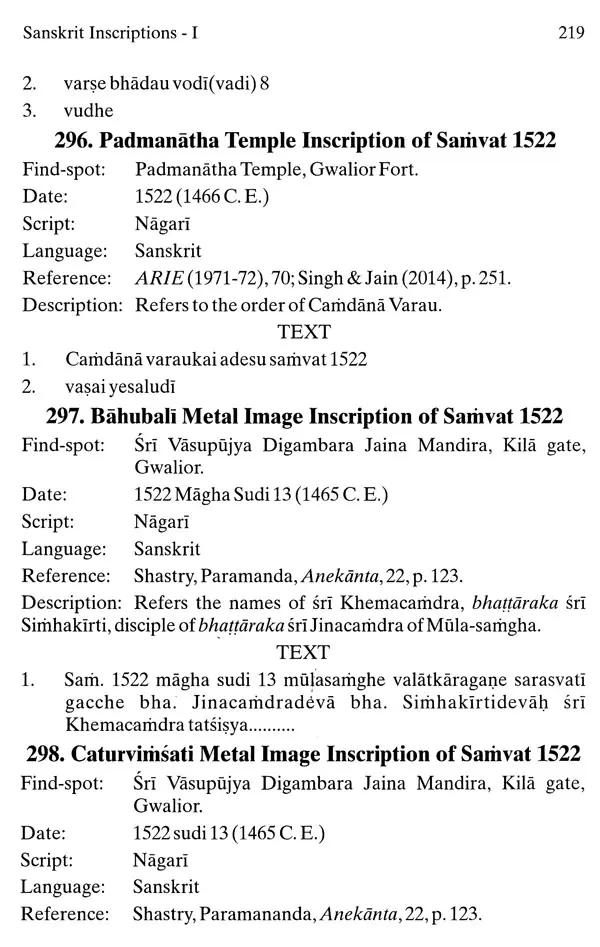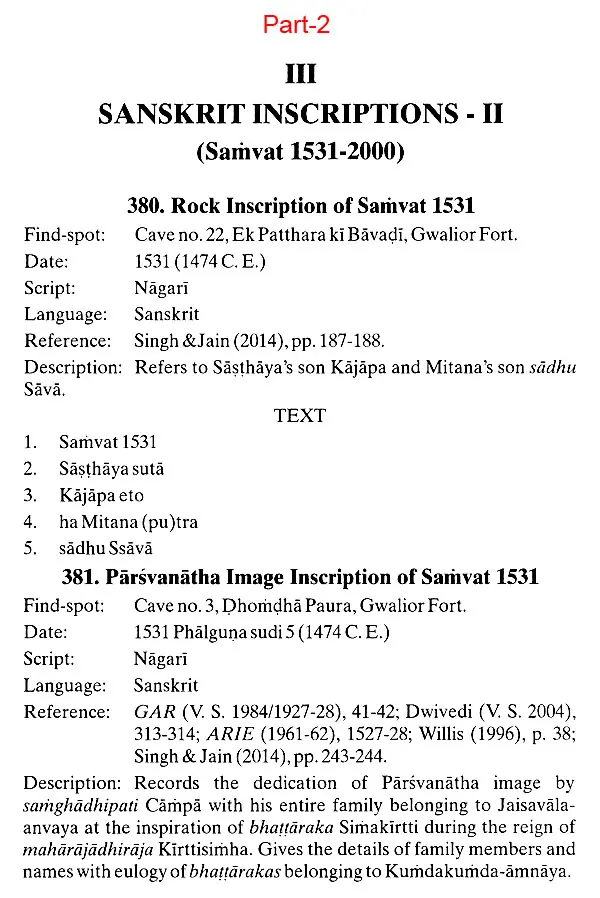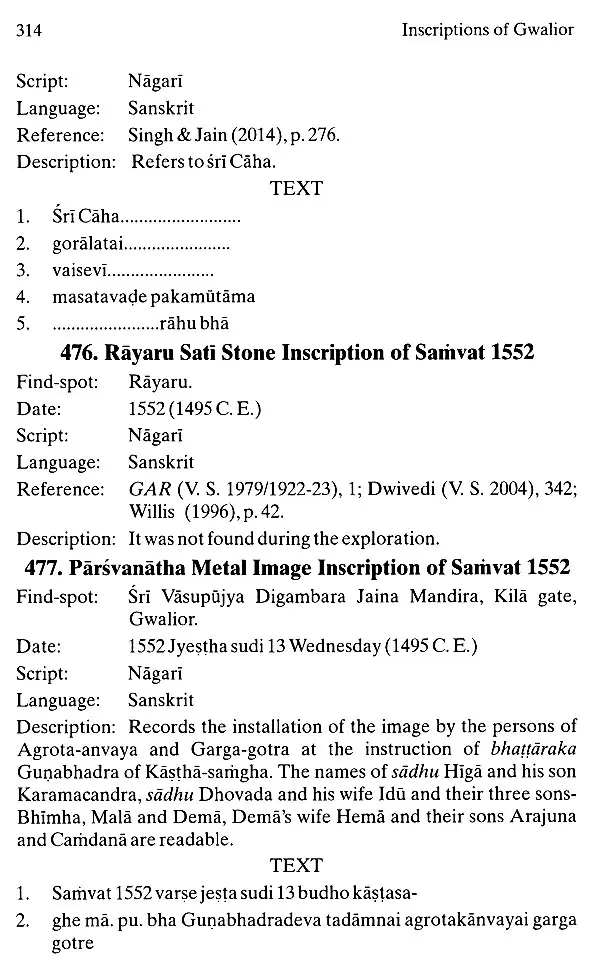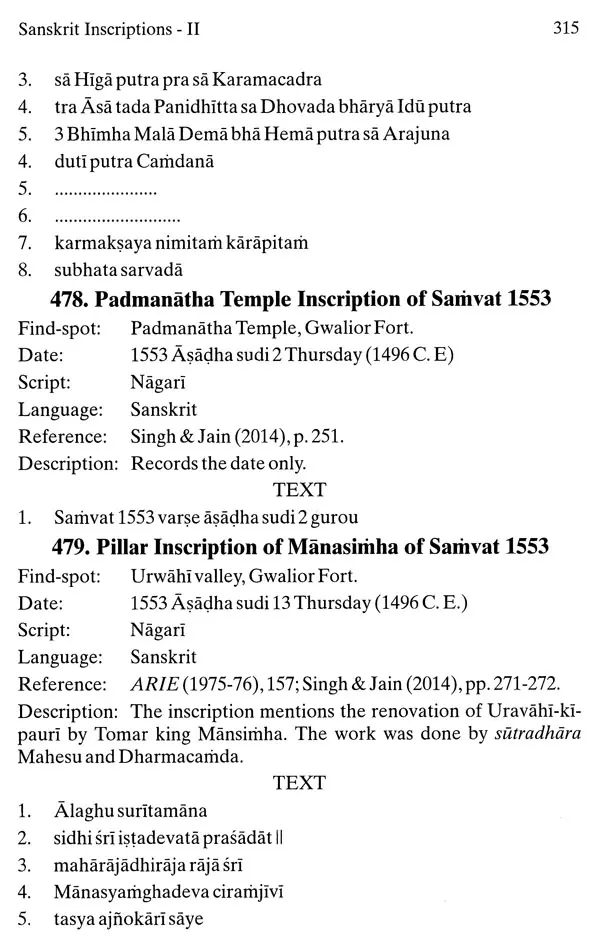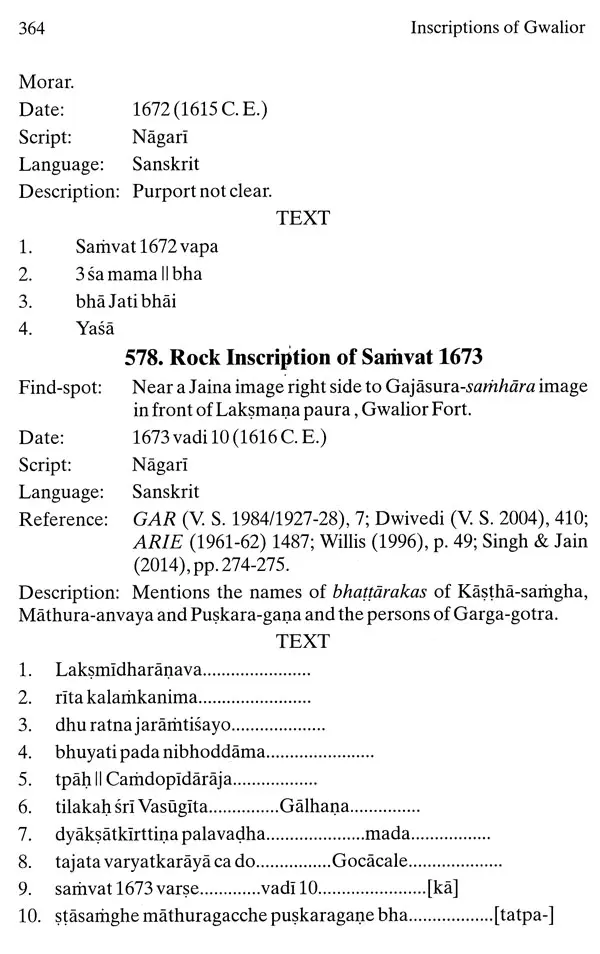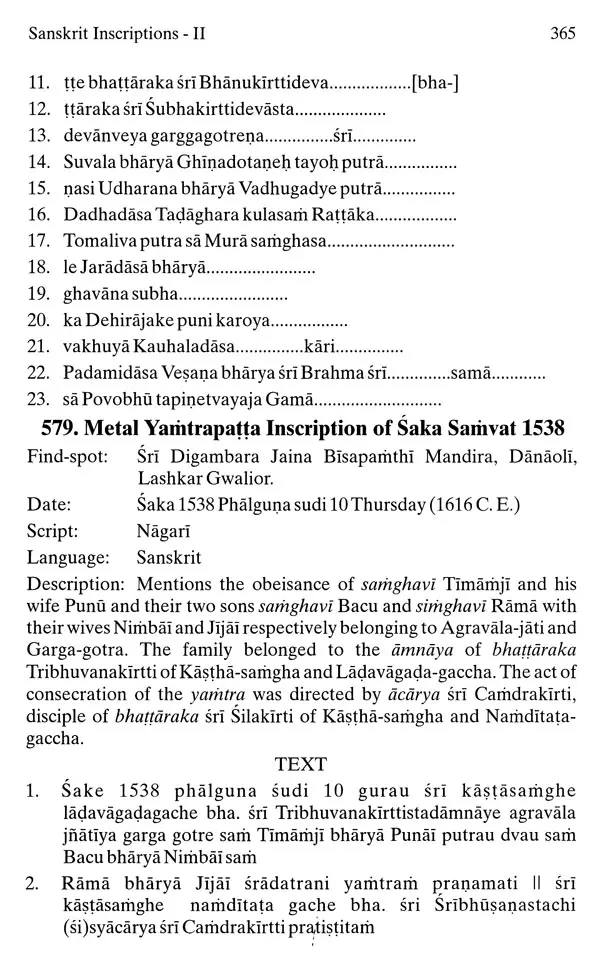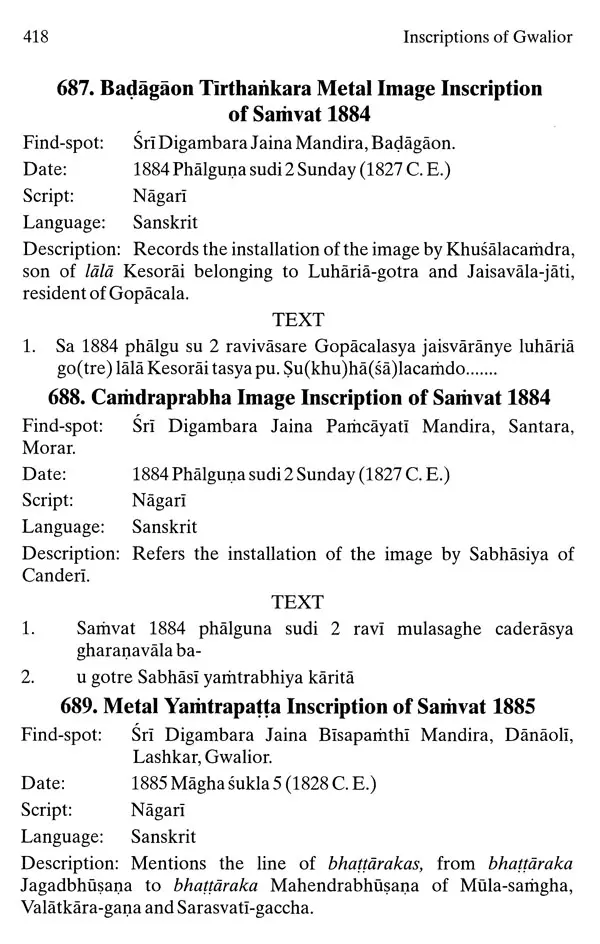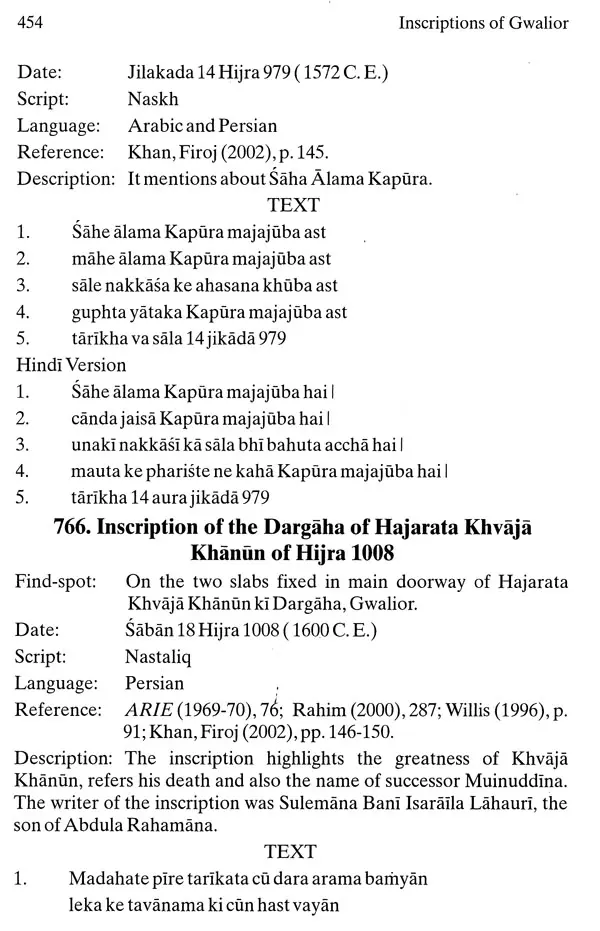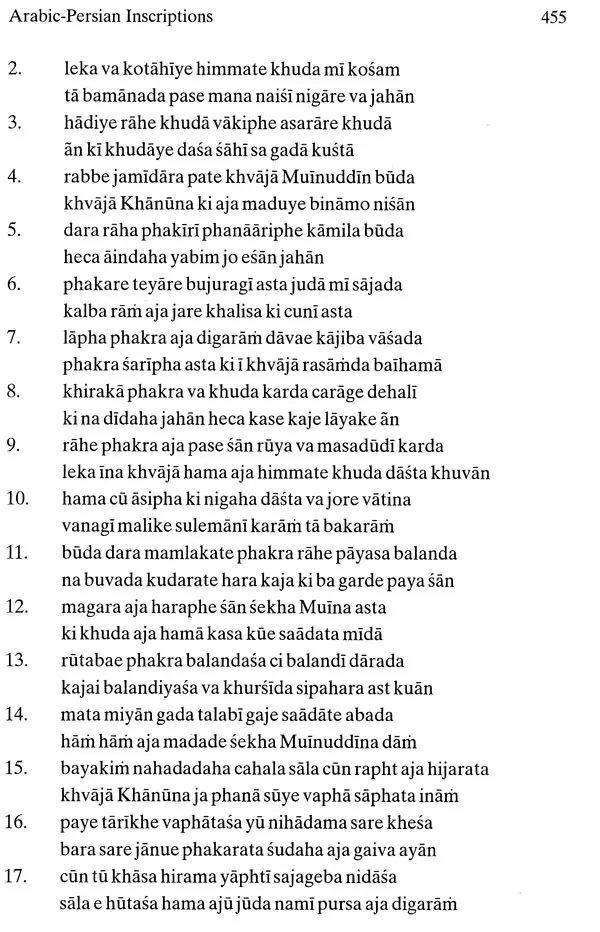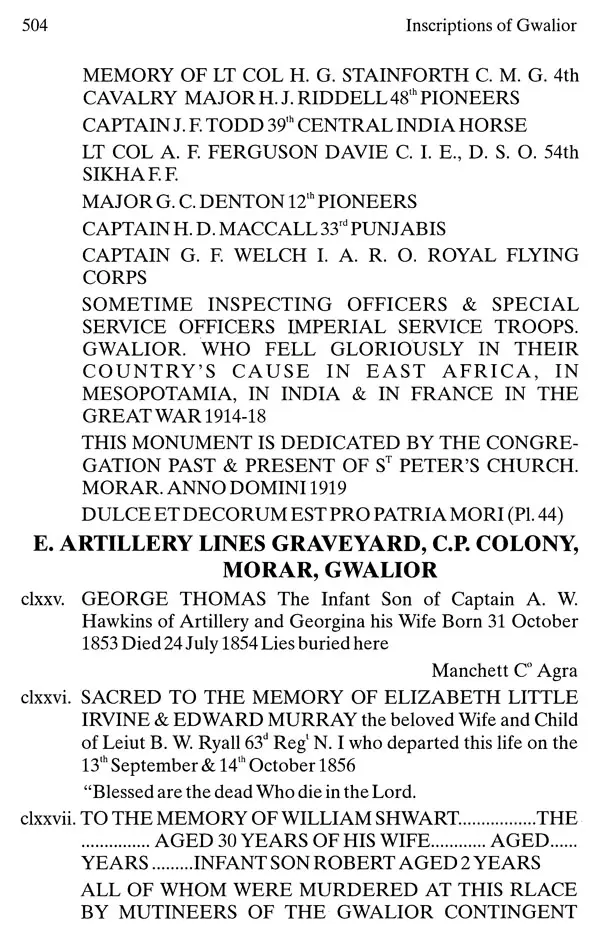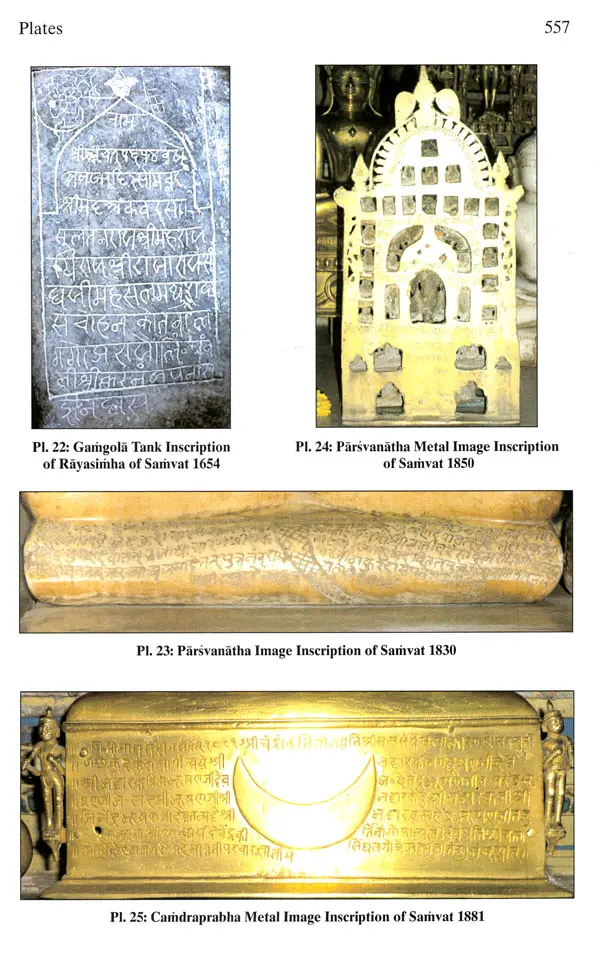
Inscriptions of Gwalior: Material for the History of Gopadri Region (Set of 2 Volumes)
Book Specification
| Item Code: | UAP844 |
| Author: | Arvind Kumar Singh & Navneet Kumar Jain |
| Publisher: | B.R. Publishing Corporation |
| Language: | English |
| Edition: | 2016 |
| ISBN: | 9789350502662 |
| Pages: | 590 (Throughout Color Illustrations) |
| Cover: | HARDCOVER |
| Other Details | 9.50 X 6.50 inch |
| Weight | 1.25 kg |
Book Description
The renowned city Gwalior is well known for its historical and religious significance. The legacy survives in form of prehistoric and historic archaeological materials, invincible fort, amazing palaces, opulent historical buildings, cemeteries, rich literature, various inscriptions, and so on. Inscriptions are vital source of information for chronological reconstruction of all aspects of Indian history and the present study on the Gwalior inscriptions is an endeavor to bring together and study more than thousand of unpublished and published inscriptions as well as to give a comprehensive account of the data related to the historical milieu, the society and social structure, economic condition and diversified religion, religious beliefs and practices. The authors have taken extreme care in documenting the epigraphs in two volumes, grouped on the basis of languages, Sanskrit, Arabic-Persian and Roman (English), used and the relevant data in each inscription have been systematically classified making the volume a descriptive catalogue of the inscriptions of Gwalior. It, thus, painstaking furnishes detailed information about the rulers and the beneficiaries, administrative and revenue terms. religious persuasion, occasion and purpose of the grants, year and other astronomical details, officials and persons present at the time of grants. right and privileges transferred to the donees, land measures, constructions or renovation of temples etc. and installations of images, digging. renovation or upkeep of tanks and wells, patronage, pontiffs, śravakas, family structure. memoirs of the deceased persons, topographical details, development of languages and scripts, and so on. A complete history written today, taking in account all recent epigraphic discoveries would be significantly different from and more complete than one written earlier. It is hoped that the innovative and scholarly work should entice the spirit of students, historians and researchers, especially those who are interested in the local history of Northern Madhya Pradesh.
Dr. Arvind Kumar Singh (b. 1959) is Professor of Ancient Indian History, Culture and Archaeology, and Dean of Social Science in Jiwaji University, Gwalior (India); obtained master's Degree in two disciplines and Ph.D. from Banaras Hindu University; was awarded the University Gold Medal and Anant Sadasiva Altekar Gold Medal for securing first position in Postgraduate Examination. Fellowships and Projects from different agencies were awarded to him. He is genuinely involved in researches. particularly in the fields of Paleography and Epigraphy. He has more than hundred research papers in reputed journals and edited volumes as well eleven books.
Dr. Navneet Kumar Jain (b. 1977) has obtained master's degree (2001), Ph. D. (2007) and P. G. Diploma in Museology from Jiwaji University, Gwalior. He has awarded Kundakund Jnanapitha Award (2011), Prof. M. K. Mathur Memorial Young Achievers' Award (2013-14) and Acarya Santisagar Channi smrti Shruta Samvardhan Award (2012 declared). He has worked as UGC associate fellow (2009-10) in a major research project. Attended and organized many seminars. He has more than fifty-five research papers and edited six felicitation/ commemoration volumes as well journals along with six books to his credit. Now sincerely involved in writing books on art, architecture and inscriptions.
The historic city Gwalior is renowned for its historical and religious importance. Its past legacy is present in the form of archaeological materials, invincible fort, amazing palaces, opulent historical buildings, rich literature, abundance of contemporary inscriptions, and so on. Epigraphy is the most important source of information for the chronological reconstruction of all the aspects of Indian history that might be political, social, cultural, economic, administrative, religious or linguistic as well provides useful information for the chronological development of art and architecture. The nature and purport of the inscriptions are diverse. Some of them are simply label inscriptions that record the names of pilgrims, sculptors, stone-masons and vandals. Many inscriptions are donatives or commemorative in nature, or records political, religious, commercial compacts, or deal with matters of revenue, law, temple administration, trade and commerce. Several inscriptions deal with the construction or renovation of temples, their adjunct and annexes, or to the excavation and construction or renovation of tanks, wells and water cisterns. The royal records normally consists of a preamble and an operative part having details as invocation, dynastic eulogies, the date of issue, the details of the grant registered therein. Creation of endowments of land and money to religious institutions and personages received great thrust with the revival of the Brahmanical religion when more and more temples and Brahmanas were being endowed with such grants. It is likely that many such lands got misappropriated in course of time and the royal donors found it necessary to include imprecatory statements and stanzas pronouncing curses and punishments on those who would dare flout the donations made by them.
Inscriptions are important historical, socio-cultural and religious document of the contemporary period. Epigraphy is a primary rather than a secondary subfield within Indology, and is the most important source of information for the chronological reconstruction of all the aspects of Indian history that might be political, social, cultural, economic, administrative, religious or linguistic as well provides useful information for the chronological development of art and architecture. The nature and purport of the inscriptions are diverse. Some of them are simply label inscriptions that record the names of pilgrims, sculptors, stone-masons and vandals. Many inscriptions are donatives or commemorative in nature, or record political, religious, commercial compacts, or deal with matters of revenue, law, temple administration, trade and commerce. Several inscriptions deal with the construction or renovation of temples, their adjunct and annexes, or to the excavation and construction or renovation of tanks, wells and water cisterns. The royal records normally consist of a preamble and an operative part having details as invocation, dynastic and regnal eulogies, the date of issue, the details of the grant registered therein. Creation of endowments of land and money to religious institutions and personages received great thrust with the revival of the Brahmanical religion when more and more temples and Brahmanas were being endowed with such grants. It is likely that many such lands got misappropriated in course of time and the royal donors found it necessary to include imprecatory statements and stanzas pronouncing curses and punishments on those who would dare flout the donations made by them.
Book's Contents and Sample Pages
